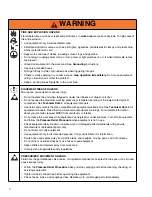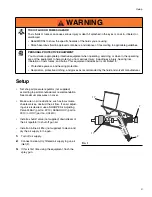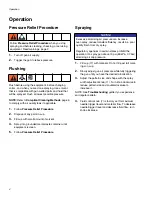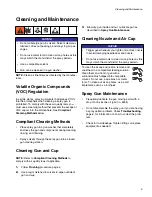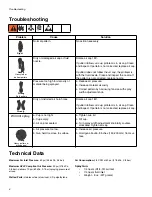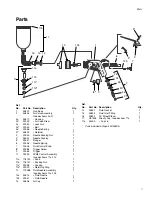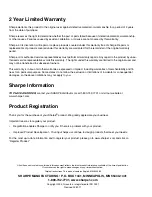
Operation
4
Operation
Pressure Relief Procedure
1.
Turn off gun air supply.
2.
Trigger the gun to relieve pressure.
Flushing
Flush before using the equipment, before changing
colors, and when you are done spraying. Use solvent
that is compatible with gun wetted parts and fluid that
will be sprayed. Flush at lowest possible pressure.
NOTE:
Refer to
, page 5,
to comply with air quality laws if applicable.
1.
Follow
.
2.
Dispose of any paint in cup.
3.
Fill cup with small amount of solvent.
4.
Spray into grounded metal waste container until
equipment is clean.
5.
Follow
.
Spraying
1.
Fill cup (17) with material. Do not fill past full mark-
ings on cup.
2.
Slowly adjust gun air pressure while fully triggering
the gun until you have the desired atomization.
3.
Adjust the pattern size and shape with the spray
width adjustment knob (11). Turn knob clockwise to
reduce pattern size and counterclockwise to
increase it.
NOTE: See
Troubleshooting
guide if you experience
an irregular pattern.
4.
Fluid control knob (7) is factory set for maximum
needle trigger travel and material flow. To decrease
needle/trigger travel and decrease fluid flow, turn
knob clockwise.
Follow
when you stop
spraying and before cleaning, checking, or servicing
equipment. Read warnings, page 2.
NOTICE
Excessive atomizing air pressure can increase
over-spray, reduce transfer efficiency, result in a poor
quality finish from dry spray.
Regulatory agencies in certain states prohibit the
operation of a spray gun above 10 psi (69 kPa, 0.7 bar)
atomizing air cap pressure.


